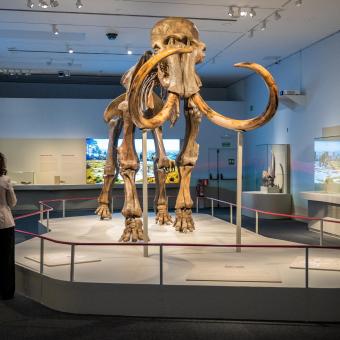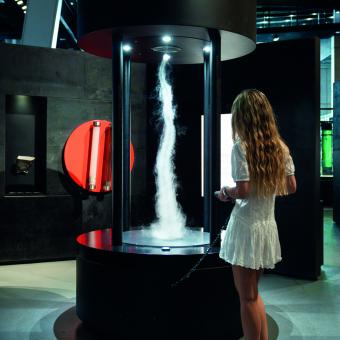
The iconic permanent exhibition hall at the CosmoCaixa Science Museum will this season feature a mammoth fossil and update some elements to explore the laws of physics and the Sun.
Mammoth. After touring various CaixaForum centres, CosmoCaixa will become the new and permanent home of a fossilised Siberian mammoth skeleton, measuring 6 metres in length and 3.5 metres in height, in excellent condition. This fossil offers a chance to reflect on what this fascinating Ice Age animal was like, where it lived and how it first appeared on Earth five million years ago, before becoming extinct just over four thousand years ago.
Tornado. The Universe Hall is updating its interactive tornado exhibit, designed to explore the laws of fluid dynamics. Visitors will be able to discover why these columns of air, formed when moist air rises rapidly, creating a significant pressure difference between the centre and the outer edges, are so dangerous.
Sun. An augmented reality installation will allow visitors to observe the Sun and explore in detail various processes of this star that are not widely known to the general public, such as nuclear fusion reactions, the journey of photons and the characteristics of the Sun’s magnetic field.
Action-reaction. Visitors will be able to learn about Newton’s third law, also known as the principle of action and reaction, which states that for every force (action) there is an equal and opposite force (reaction). This will be demonstrated through a rocket: when a certain mass is expelled from one end, an impulse is generated in the opposite direction that depends on the mass ejected and its velocity.
Zoetrope. The hall will feature a new Pixar zoetrope with characters from Toy Story. In this optical device, a strobe light flashes on each figure to freeze its motion, allowing the human eye to perceive each phase of the character’s movement as a single image. When our eyes see all these frozen images in rapid succession, the effect of “apparent motion” links them together, creating the illusion that they have come to life.

